Best New Records I Heard in May, 2025
With the caveat that there's one I think is even better I'm saving for next month's column
Craig Finn – Always Been. I’ve been listening to this guy for almost two decades now, whether in his band the Hold Steady or on the somewhat less rocking solo albums. He figured out a long time ago that he could make excellent music as a vocalist with almost no interest in melody – Finn speaks his lyrics, sometimes while half-singing, sometimes just conversationally. It works because a) he always has talented musicians around him working up strong musical tracks; b) he is aware of the rock band dynamics that allow him to hold interest in the context of these songs; and c) he is a passionate and compassionate observer of details about human beings, especially those who live on the lower rungs of the economy and social circumstances. Some of the characters recur from song to song – heck, the same story even gets told twice in different ways in “I Walk With a Cane” and “Clayton.” I admit I rarely look forward to Finn’s records, but I always feel immersed in them once I start listening – the pleasure is there, but hard to describe.
The Hemphill Stringtet – Plays the Music of Julius Hemphill. The late Julius Hemphill was the coolest member of the World Saxophone Quartet back in the 80s. Standing several inches taller than his compatriots, and swaying lightly side to side, he was the focal point whenever the group took the stage. He was one heck of an alto saxophonist, and probably an even better composer. Cellist Tomeka Reid is the only name I know among the quartet of string players assembled to pay tribute to Hemphill but clearly all four are intimately acquainted with his music. Hemphill apparently wrote the three-part piece “Mingus Gold,” paying homage of course to Charles Mingus, for the Kronos Quartet but they never recorded it. The other pieces here were originally written for the World Saxophone Quartet, and have been edited for string quartet by Marty Ehrlich. The tunes are catchy, the parts intricate, the performance stirring.
Valerie June – Owls, Omens, and Oracles. There ain’t nobody else who sings like Valerie June. She has a gritty soprano and an ability to waver off pitch that makes it seem that’s what the song absolutely needs. Her songwriting is solid, though she doesn’t come up with many that other people might want to try to cover. Instead, it’s all about her voice, her arrangements, her commitment to the emotions at play. Several songs here are full of joy and exuberance and delight in expressing herself – the album opens with “Joy, Joy!” and it earns that exclamation mark. Others cover sadder occasions, when love has ended, and she mourns what has been. Still other tracks are in between, with the clarity of everyday life and experience in the sound of her singing.
Galactic with Irma Thomas – Audience With the Queen. I first heard Irma Thomas back in the 80s and the song that I remember affecting me deeply was one I also hadn’t heard before, “Wind Beneath My Wings.” After I heard the hit version of that song, I realized even more that Irma Thomas was a special singer – she has not a single cliché idea in her repertoire. Instead everything she sings comes from a deep connection to what she wants to express through the words and the melody. Galactic, one of New Orleans’ tightest combos these past couple decades, put together these songs for her to sing, and the result is superb. There’s a wonderful take on the Nancy Wilson hit “How Glad I Am,” then a bunch of original songs that give Thomas a chance to show us she still has all her skills at age 84. My fave is “Lady Liberty,” which sent me to Google to make sure it wasn’t some lost Allen Toussaint song. It’s one of a couple songs here in which Thomas leaves her great subject – love – and sings about the state of the world, mixing clear-eyed realizations with tiny glimmers of hope.
Silke Eberhard Trio – Being-A-Ning. Alto saxophonist Silke Eberhard, bassist Jan Roder, and drummer Kay Lubke have played together for almost twenty years. They have achieved an uncanny ability to communicate and interact musically together. A great saxophone trio has to rely on this sort of thing, since there’s no piano or guitar or any chordal instrument holding down any kind of steady place setting. This is a great trio. Eberhard wrote all but one of the ten cuts here. They are knotty, catchy, surprising tunes which keep listeners on our toes as we try to follow along the paths of the compositions. Fortunately, they are rhythmically supple enough to make the trickier parts understandable. I don’t think I know much German jazz of the last thirty years, which is the time frame for all three of these players. This album makes me want to explore more.
The Waterboys – Life, Death and Dennis Hopper. In answer to widespread demand, we finally have the inevitable biographical concept album about actor/director/personality Dennis Hopper. Or wait, maybe that was only in answer to Mike Scott’s peculiar fixation on writing songs about the guy. At any rate, whether I thought I’d want it or not, I’m loving this record. The Waterboys, augmented by Steve Earle or Fiona Apple or Bruce Springsteen or a couple names I don’t recognize, present this collection of snippets from Hopper’s life and career with verve and aplomb. The songs are catchy and frequently rocking. You can follow Hopper as he arrives in Hollywood, dates Natalie Wood, hangs out with Andy Warhol, goes to the Monterey festival, directs Easy Rider and becomes famous, directs The Last Movie and pisses it all away, is considered a has-been, stars in Blue Velvet and becomes big again, shows up on talk shows, learns to play golf, and finally passes away. It’s like a board game of a famous life, but you can sing along and tap your feet.
Peter Holsapple – The Face of 68. I’m three years younger than Peter Holsapple, so maybe being 9 years old at the time, and not yet interested in pop music, I never heard about any “face of 68” being a thing 57 years back. But Holsapple did, and he decided to pun on the phrase by writing a song about his own face (and life) at 68. Of course, it didn’t come out until he’d turned 69, but that’s the way the record biz is, even when you work In the indie realm. Holsapple was part of the dB’s, my fave band of the 80s, and the Continental Drifters, my fave band of the 90s. I’m saying that so you know I’m predisposed to like this one. These are among the best songs he's ever written, and the production by Don Dixon presents them in the best possible light. Holsapple is a melody maker, and a powerful arranger, making sure that these songs rock and pop and crackle. Other subjects include record collecting, chasing fireflies when you’re a kid, and claiming you’ve invented practically everything. Holsapple has always been great at taking an idea and exaggerating it for effect. This album is absolutely top flight pop/rock with guitars, keyboards, bass, drums, and vocals.
Vicki Peterson & John Cowsill – Long After the Fire. Speaking of my fave band of the 90s, former Continental DrifterVicki Peterson – who you probably know better as one of the Bangles, my second fave band of the 80s – is here with her husband John Cowsill, one of the members of the Cowsills back in the late 60s and early 70s. Two of the five Cowsill brothers, Barry and Bill, passed away some 20 years ago, leaving a bunch of songs most of us never got the chance to hear. John pays tributes to his brothers by putting out this record of their material. He sings about 2/3 of the 12 cuts while Vicki sings lead on the others. First conclusion is that the late Cowsills knew how to put together pop and pop/country songs – the melodies and hooks are indelible and after just a couple weeks I feel as though I’ve known these songs for years. Second conclusion is that John and Vicki know how to arrange strong material to make it even better. Third conclusion, though it’s no surprise, is that John and Vicki are both fabulous pop/rock singers who express the ideas of the late Cowsill brothers perfectly.
Ambrose Akinmusire – Honey From a Winter Stone. I encountered Ambrose Akinmusire’s music with the release of his first album almost twenty years ago when he was 26 years old. Even now, I still think of him as a young jazz trumpeter, but really, when you’re 45, you’re a veteran of the game. This album expands further on the explorative music he’s been known to make. He’s got a band that includes himself on trumpet, Kokayi on improvisation vocals which are somewhere between rapping and old-school jazz poetry, Sam Harris on piano, Chiquitamagic on synthesizer, Justin Brown on drums, and the Mivos Quartet on string quartet. Not everybody shows up at the same time, nor on every cut. But these expansive, breathing compositions, which are more like suites much of the time than anything else, benefit from the sounds of all the players. Akinmusire himself may lay out for much of a tune, letting the Mivos Quartet run contrapuntal lines with Harris, or giving Kokayi a chance to drop brand new science over electronic beats fused with the rest of the group. Every time Akinmusire plays trumpet, though, it’s a breathtaking experience on top of an already powerfully moving record.
Rhiannon Giddens & Justin Robinson – What Did the Blackbird Say to the Crow. Seventeen out of eighteen cuts here are fiddle and banjo duets, with the other one giving us two banjos. Giddens, ex-member of the Carolina Chocolate Drops, hasn’t released as much of the old-timey folk music she did with that band. Robinson is a guy I don’t know, but he clearly loves this music as well. He plays the fiddle and sings when there singing to be done. More than half these songs are instrumental. All can be described with one word – lively. Apparently these were recorded outdoors in the countryside somewhere. There is a buzzing you can hear after most songs that sounds remarkably like the old modem noise we used to hear in the days of dial-up. You can tell I don’t spend much time in the country. Also, kudos to the chicken who timed its cock-a-doodle doo perfectly at the end of one song.
Adam O’Farrill – For These Streets. Even if you don’t recognize the name of the leader, the presence of Mary Halvorson on guitar and Patricia Brennan on vibes should make you rush to your nearest outlet for hearing this record. O’Farrill is a terrific trumpeter, too, and a highly imaginative composer. All the tunes here are deep and taut, filled with opportunities for the players – which also include Davi Leon on alto sax and flute, Kevin Sun on tenor sax and clarinet, Kalun Leung on trombone and euphonium, Tyrone Allen II on bass, and Tomas Fujiwara on drums, to show off their ensemble support as well as improvisational moments. O’Farrill loves to drop down to quiet moments wherein he barely blows into the mouthpiece of his trumpet, but he also can play loud and clear when he feels like it. A lot of the songs move very slowly harmonically, and very agitated rhythmically. I’ve got no complaints at all.
Tunde Adebimpe – Thee Black Boltz. I always kinda liked TV on the Radio without ever falling in love with them. They were one of the indie rock bands in the back half of the 00s that enabled me to bond with some of the younger record store customers and co-workers of the time. I certainly didn’t expect from that experience to find their lead singer making such an engaging solo record all these years later. Adebimpe has a distinctive voice, one which exclaims more than it croons, but which he knows how to make carry tunes. And his tunes are catchy and fun to hear. The first three actual songs here, especially, all sound like potential hit singles to me, at least in my world. The energy is strong, the rhythms infectious, and the lyrics a little oddball, the one about the man who “Ate the Moon” especially. The quality never flags much, as Adebimpe moves through different kinds of rhythms and moods. Do I need to go back and revisit his prior band’s work to see if this could have been foreseen?
Southern Avenue – Family. I had heard Be the Love You Want, the previous album by this family group, but I don’t remember it being as exceptional as this one. The band is made up of three harmonizing Jackson sisters – Tierinii on lead vocals and songwriting, Tikyra on drums, and Ava on percussion and violin – along with Tierinii’s husband Ori Naftaly on guitar. Put them in the studio with a strong bassist and organ player, and you’ve got a rootsy powerhouse. Southern Avenue competes in the blues category of the Grammy Awards, but the music is a mixture of all sorts of Memphis styles. The vocals remind me of En Vogue with harmonies that are constantly creative and shifting and the music reminds me of early Pointer Sisters. Tierinii has outdone herself with these songs, as the hooks and the sense of family connection inherent in them provide for a warm listening experience. A sleeper record that deserves a wider audience.
Silverada – Texas 42. This six-song EP shows a gentler side of Silverada, the band formerly known as Mike and the Moonpies. (While that old name was among the silliest I’ve ever heard from a group with a career, changing it to the more stately but less memorable Silverada may not have been their best idea). Here we have five originals and an Uncle Tupelo cover performed with just acoustic guitars and dobro. Our man Mike sings quieter, too, with songs about drinking and pool playing and life on the road and staying in your home town. It’s Americana 101, but they do it very, very well. The version of “New Madrid” may not have the loose knit heart of Uncle Tupelo, but it holds up to a straighter country take.
Jon Cleary – The Bywater Sessions. Jon Cleary never lets me down. This British-born long time New Orleans resident knows just about everything that needs to be known about how to tap into the zeitgeist of his adopted city’s music history. He plays piano with a ridiculous technique and an even more incredible feel. Most of the songs here he wrote, and the two he didn’t are by Lee Dorsey and the Meters, so you get the idea there. With the exception of the first verse of “Pickle for a Tickle,” this record is clearly intended to get people out on the dance floor. Funky rhythms, catchy hooks, pumping brass fills, and Cleary’s clear vocals all work in tandem with his piano playing to make for one heck of a party. Also, don’t sleep on “Fessa Longhair Boogaloo” which melds Professor Longhair’s indomitable style with some New York City salsa.
Willie Nelson – Oh What a Beautiful World. Willie Nelson isn’t slowing down at all. Here he pays tribute to the songs of Rodney Crowell, which gives him some different rhythmic and melodic approaches than we’re used to from our favorite nonagenarian. He sounds energized by these tracks, which are mostly from the Crowell albums I don’t know as well as others. Of course “Shame on the Moon,” one of Crowell’s best and biggest cuts, turns up. Other songs in that mid-tempo country rock essence make up the bulk of choices here, including the title track on which Crowell himself harmonizes with Willie and sings a verse himself. There’s also the rocking energy of “She’s Back in Town” which shows our man can still work a fast one when he wants to. Great songs, great singing, great arrangements, great playing, great album.
Tori Amos – The Music of Tori and the Muses. I haven’t looked up any info on this record or read a single review or interview about it. My intuition is that these are song ideas she’s carried with her since childhood – imagining an “Insect Ballet,” making up a Mermaid muse, fixating on the best cupcakes in the world, and making up wonderful wordplay like “I can be scited, scared and excited” are the kinds of things that pop easily into the minds of ten or twelve-year-olds. She’s not exactly making a kid’s record, though. The music is too ambitious, the melodies and arrangements complex enough for adult listeners. I haven’t checked in with Amos in a few years, but I do find this record to be compelling.
David Murray Quartet – Birdly Serenade. David Murray makes his first major label record in over thirty years, and it’s a good one. He teams up with three musicians who are all just over half his age – Marta Sánchez on piano, Luke Stewart on bass, and Russell Carter on drums, the same team that worked on his acclaimed Francesca album last year. The singer Ekep Nkwelle stops by for a couple of tracks, delivering lyrics written by Murray’s wife Francesca Cinelli. I’m not always a fan of this kind of vocal, but Nkwelle is a captivating singer. The rest of the time, it’s Murray and Sánchez trying to top each other and often succeeding. I don’t think we’re going to again get the intensity Murray delivered back in the 80s on a regular basis, but this album doesn’t disappoint. There’s even a wild excursion into freedom on “Black Bird’s Gonna Lite Up the Nite.” Whether he’s playing melodies based on chords or flying high into the stratosphear, Murray maintains his status as greatest tenor saxophonist (and bass clarinetist) working today.
Mei Semones – Animaru. I don’t have the slightest idea what she’s singing about, as Semones slips back and forth between English and Japanese and sometimes scats throughout this intoxicating album which blends bossa nova, indie rock, jazz, and chamber music influences. Her band features her guitar playing prowess which moves between delicate acoustic passages and heavy electric chugging. She also has a viola player and a violinist to go with a bass player and a drummer who meet the challenges of all the musical stylings of the record. Semones sings with a lilting soprano that can turn harsh on the upper part of the alto range. She writes extraordinary melodies which make me not worry at all about the words. (I should say her Bandcamp page does make a case that it might be even better to try and catch what she’s got to say now and then.)
I’m With Her – Wild and Clear and Blue. Approximately every fifty years or so, somebody writes a great song with the word “rhododendron” in it. Obviously Roxy Music’s usage in “Do the Strand” is impossible to beat, but boy am I enchanted with this second best attempt. “Rhododendron” is an intoxicating recording with a video set in the same sort of clear outdoor field the song celebrates. The idea is that once the flower is spotted in the field, the urge takes over to just lay down and feel comfortable. The three singers – Sara Watkins, Sarah Jarosz, and Aoife O’Donovan – go all contrapuntal with each other for the last minute or more, and that’s always guaranteed to win me over, especially when it’s done this beautifully. This is the second album by these three women who have been writing and singing together for more than ten years, and separately since they were very young. Watkins was in Nickel Creek while the other two were always solo performers. (UPDATE: Thanks to commenter Mark who pointed out that O’Donovan has performed often with a group called Crooked Still.) Their voices blend together in exquisite harmony, their instrumental prowess – Watkins on violin, Jarosz on mandolin, banjo, and guitar, and O’Donovan on guitar) complements each other, and their songs are lovely and full of surprises.
Maren Morris – Dreamsicle. I’d forgotten that Morris had announced her break with country muic a few years back. Here she is with a delightful pop record produced by Jack Antonoff. The hooks are unforgettable, the melodies highly hummable, the lyrics clever and interesting, and the singing highly professional. I like it a lot. That first song, “Lemonade,” should be a giant hit, but I don’t even think it’s a single. The second song has a trippy opening thing happening on the bass that surprises me every time I hear it. Later, she sings lyrics like “Can’t save it for later / So just savor what you can,” the kind of word play that always makes me smile big time. At the end, there’s “Holy Smoke,” a big spritely pop song about being agnostic and looking forward to finding out what happens at the end. You don’t hear stuff like that one on country albums.
Car Seat Headrest – The Scholars. “Are you proud of your son? Are you proud of how he turned out?” Somebody asks this question just after the music stops on this 70-minute extravaganza of a record, and a woman answers, “Oh yes.” Is that Toledo’s mom? Or is this part of the mysterious rock opera referenced in press materials but which doesn’t begin to make sense as a story no matter how often I listen? Not that it matters, either way. The joy of Car Seat Headrest, now a full-fledged band and not a solo project of the uni-monikered Toledo, is in the sound of the music, in the tension and release which happens again and again, in the build-ups of the arrangements, in the frequent use of vocal sounds which don’t mean anything but which add to the excitement. The only lyric that I’ve internalized is this: “Scrolling through my contacts / But there’s no one left to text.” Sounds like the ultimate lonely expression of the modern age, doesn’t it?




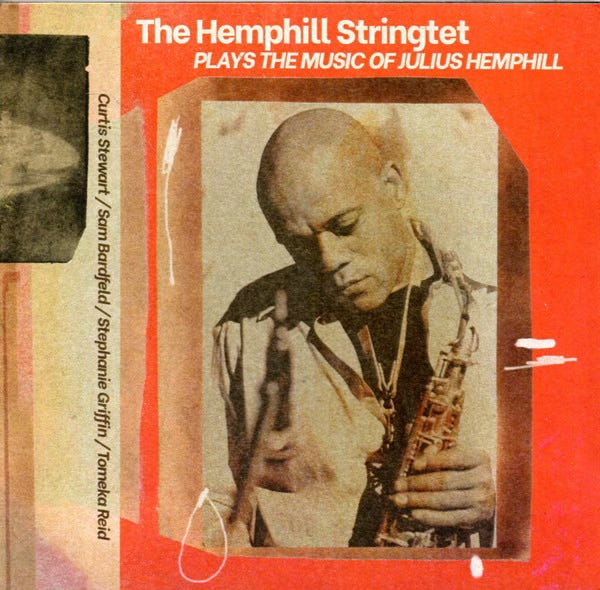


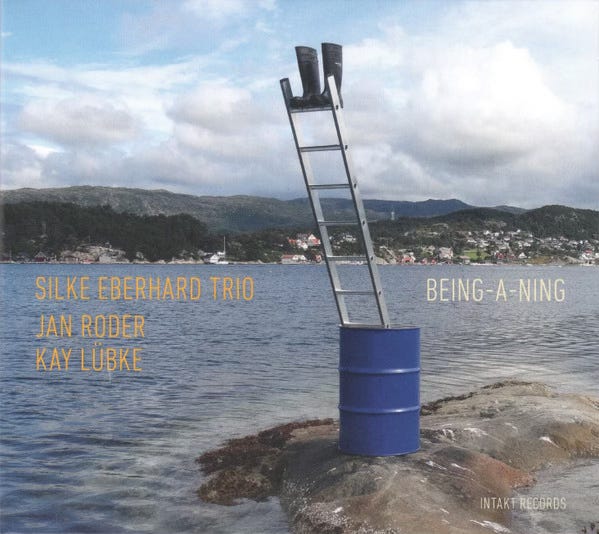






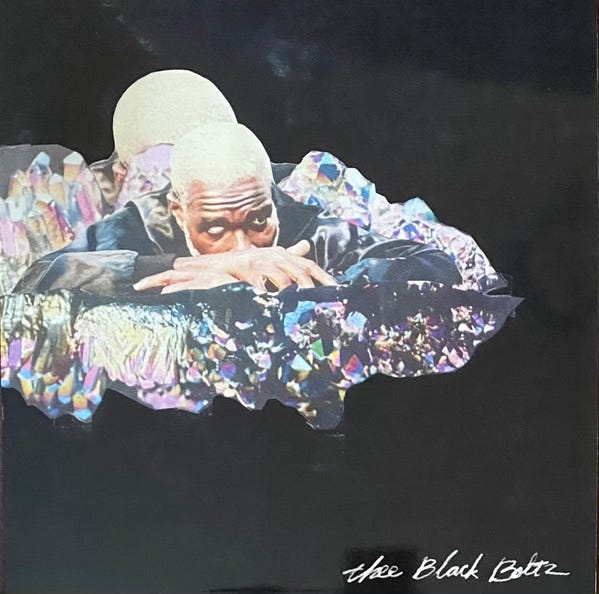

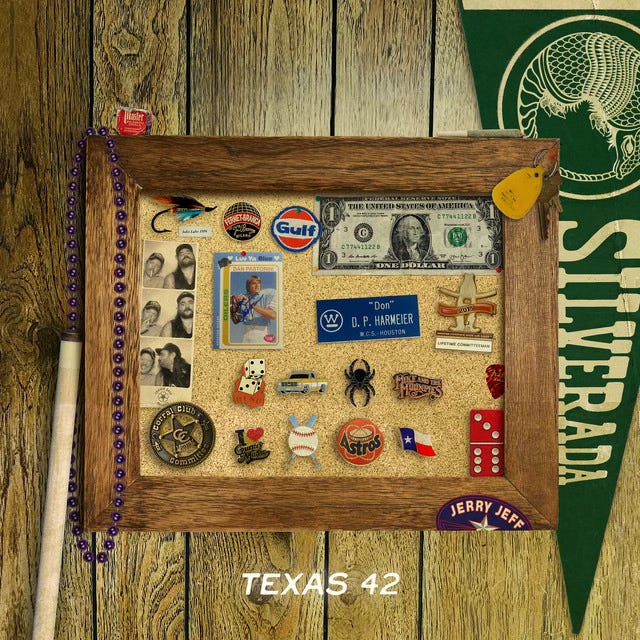

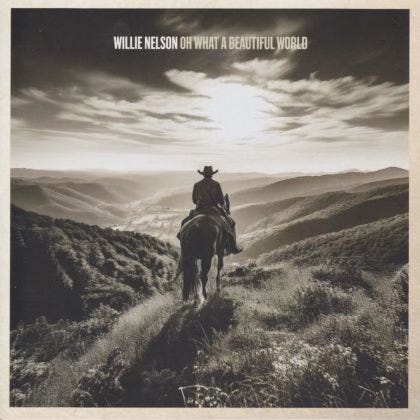



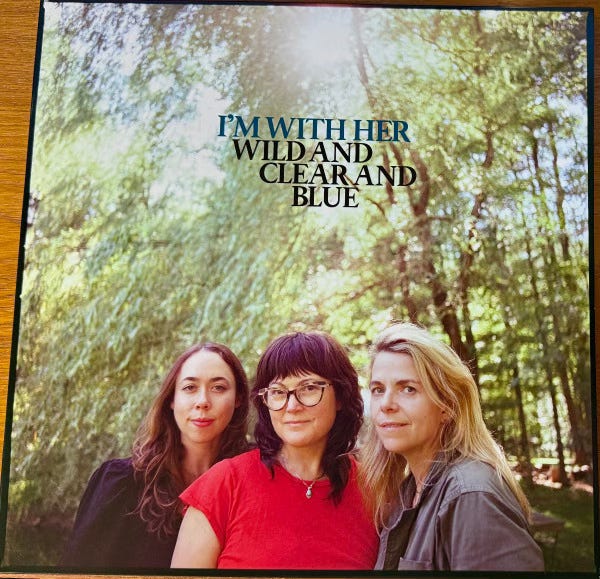
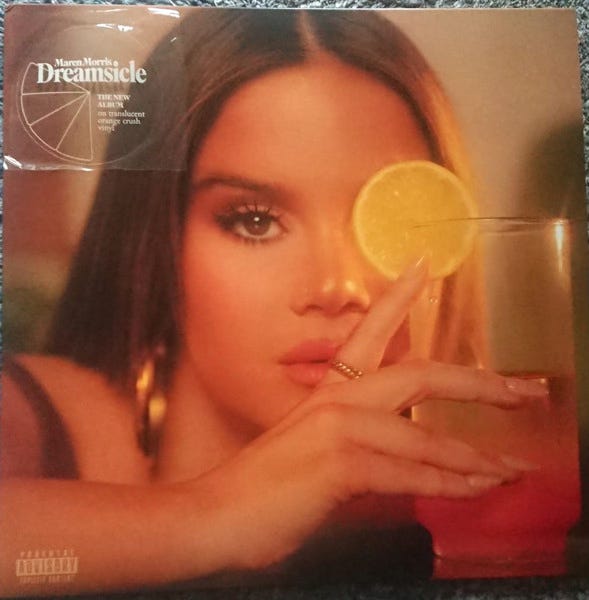

I am immediately on that Cowsill - Peterson record! Thanks! Great job as always!
Love this entry into the Pick review pantheon. A few albums I haven't heard yet, that i look forward to checking out soon.
One small quibble Steve. In your review of Im with her, you write that aoife o'donovan has always been a solo artist. In fact she led a wonderful new england based bluegrass/americana band called Crooked Still. They've put out more recordings than Aoife has as a solo artist, and surprisingly popped up on season 2 of the tv show the last of us.